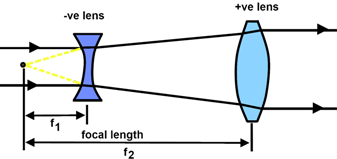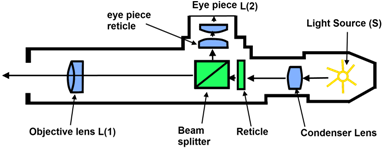Laser Accessories Part 2 (Optical Materials)
Optical Materials
Currently there are a great number of materials available for use in the optical components. Unfortunately not all optical materials are suitable for use with all laser components.
For choosing the material for use in optical components several characteristics must be considered, that are:
- The amount of light absorbed by the material at a given wavelength.
- The ability of the material to withstand extreme heat in high power situations.
- The general durability of the material.
- The amount of distortion introduced by a material.
In optical materials, 1st one mostly used is glass most of lenses in general use today are made of optical glass. In the visible spectral range, nearly any type of glass can be used for optical elements. However low quality glass can distort the beam and because of amount of light energy that it absorbs, glass can be damaged by high power laser outputs.
So the next material quartz material is often used when working with lasers that operate in the ultraviolet range of the spectrum, near the visible range. Quartz material transmits the range of wavelengths with little absorption. Also they resist high power levels and have excellent optical qualities. Quartz is usually used in CO2 lasers.
The material Alkali Halides can be used in optical components. These are designed to operate in the infrared portion of the spectrum. Most common Alkali Halides used for infrared optics are Sodium Chloride (NaCl) and potassium chloride (KCl). Both have lower light absorption characteristics and are inexpensive. Their main advantage is the transmission of visible light when aligning the laser system. The biggest disadvantage to the alkali halides is their water solubility means they are soluble in water and will deteriorate if exposed to water vapor in the atmosphere.
Several semiconductor materials such as Germanium, Zinc solenoid, Cadmium telluride and gallium arsenide have been found to work well in the infrared range. These materials offer’s low absorption at 10.6 micron wavelengths but are relatively expansive. Furthermore the germanium does not transmit visible light, which makes laser alignment difficult. It has also very high Fresnel reflection and must be coated to reduce the reflection. The material Zinc solenoid transmits visible light but it is extremely expansive.
Collimators
Collimators can be of two types. That is
Up Collimator
Auto Collimator
Up Collimator
A collimator is an optical device similar to the telescope but specifically designed for use with laser system. The main purpose of collimator is to reduce the beam divergence by enlarging the beam diameter.
Commonly there are two types of Up collimators used, that are Keplerian Collimator and Galilean Collimator. Now let us draw the schematic representations of both up collimators, which are


Clearly the Keplerian collimator consists of two converging lenses positioned such that their focal points are at the same point. It’s function is somewhat as the smaller lens focuses the laser light to its focal point. This focal point then acts as a point source for light rays that enter to the larger lens. The light beam expands beyond the focal point and strikes the larger lens. Since the light goes through the focal point of the larger lens, therefore it will emerge from the large lens in a parallel beam. Thus the beam diameter is increased by the ratio of the focal length of the two lenses. An interesting fact is that the divergence of the beam entering the collimator will be reduced be same factor.
For example, if the large lens has five times the focal length of small lens, then diameter of the exiting beam will be five times larger while the divergence of the output beam will be 1/5 that of the original beam. In this way up collimator can be used to reduce the divergence of the beam of laser.
Since the spot size at the focal point of a lens depends upon the divergence of the beam entering the lens. Therefore ti is desirable to reduce the divergence of laser beam as much as possible before the beam is focused. Keep in mind that when the beam is focused to smaller spot, less laser power is required to produce the same irradiance on the given area.
Note That the Galilean collimator serves the same function as Keplerian collimators does. But Galilean collimator uses a negative lens as its input lens. This type of collimator is used with very high power lasers because the beam spreads out immediately and never more concentrated than when it enters the collimator. Another advantage of the Galilean collimator is that with negative lens, a given collimation ratio can be obtained in a shorter distance.
Collimators can theoretically be made in any ratio but it is uncommon to find them commercially with ratio larger than 20:1.
Autocollimator
An autocollimator is a device that is used to measure extremely small angles. It is also used to align the feedback mirrors in a laser cavity. There are many designs of autocollimators but they all works in the same way. Diagram of typical autocollimator is as:

As shown here, the autocollimator consists of a light source whose light is focused by the condenser lens onto the reticle. The reticle permits the light to pass only on single line in both vertical and horizontal axis. The light pattern from the reticle passes through the beam splitter. The beam splitter divides the light beam and sends a portion to eye piece while remainder through the objective lens. After the light beam passes through the objective lens, it travels to the mirror that is to be aligned.
Light reflected from the mirror is focused by the objective lens and forms the second image of the reticle. If the mirror is perfectly aligned then this image is super imposed on the first image.
Remember that any misalignment will be indicated by a second image that does not lineup with the first one.
Reflective Mirrors
The reflective mirrors are also used with lasers. They are used in the laser beam delivery systems. But recently due to invention of fiber optics their use becomes very less nowadays.
Optical Fiber
The optical fibers are mostly used with lasers in their delivery systems optical fibers are generally made of glass and quartz material, both of which are extremely useful when the wavelength of transmitted light is invisible spectrum. Therefore the use of fibers is limited to visible and near infrared lasers. Optical fibers also have the tendency to absorb some visible and infrared light. The amount of absorption, although small, can be enough to damage the fiber if high power lasers are used.
Etalon
An etalon is a wedge shaped piece of glass which by means of constructive and destructive interference produces a very less frequency bandwidth from a laser.
In simple words we can say that etalon is a device used to reduce the laser bandwidth. The Etalon is most commonly used with Argon and He-Ne lasers, where very precise control of the laser output is required.
In the laser cavity the placement of Etalon is between HR mirror and laser tube as shown

Here when the beam reflecting from HR mirror containing many wavelengths enters the etalon then it is reflected inside the wedge. The path of the beam travels varies in length depending on the tilt of the Etalon. For example

As with cavity, the length of cavity determines its resonant frequency. Remember that in phase constructive interference effects of the Etalon are for an extremely small range of wavelengths. Other large wavelengths (longitudinal modes) are reduced by destructive interference.
Thus an Etalon causes high loss or low gain for some longitudinal modes but allows the desired longitudinal mode to be amplified.
Constructive interference permits here the finer tuning of the wavelength. The tuning of the Etalon is so precise that even temperature changes causing expansion of the Etalon can vary the output longitudinal mode. Therefore the Etalon are often temperature controlled while in use.
Brewster Windows
In lasers, the use of the Brewster windows on the laser tube is to polarize the beam by reflection.
Polarization
We know that a beam of ordinary light consist of electric and magnetic vibrations which are perpendicular to each other, for example sown as

Since tourmaline and some other crystals have their internal structure such that electric vibration is allowed to pass through the crystal while magnetic vibrations are blocked.
Therefore when ordinary light falls on the surface of the crystal then only those components of light are allowed to pass through the crystals which are vibrating parallel to the axis of the crystal. So light passing through the crystal vibrate only in one direction. This light is said to be plane polarized and the process is called polarization of light.
Different ways to achieve the polarized light are
- Polarization by reflection
- Polarization by filtration
Polarization by reflection
When light is reflected from glass or some other non-metallic material then it can partially polarized. Obtaining polarized light by this way is called polarization by reflection.
Polarization by filtration
The transparent materials/crystals have different refractive index for light moving parallel to optical axis and for light moving perpendicular to optical axis. Thus consequently they tend to pass the light in obly one plane. Materials of this type are known as birefringent material and obtaining the polarized light by this way is called polarization by filtration.
